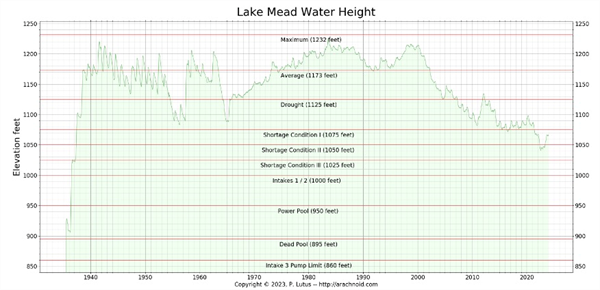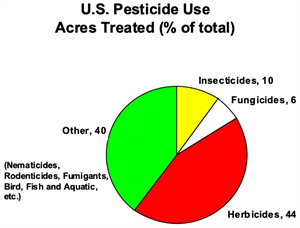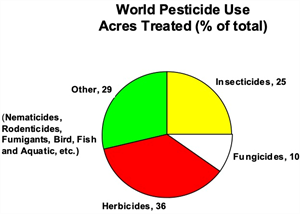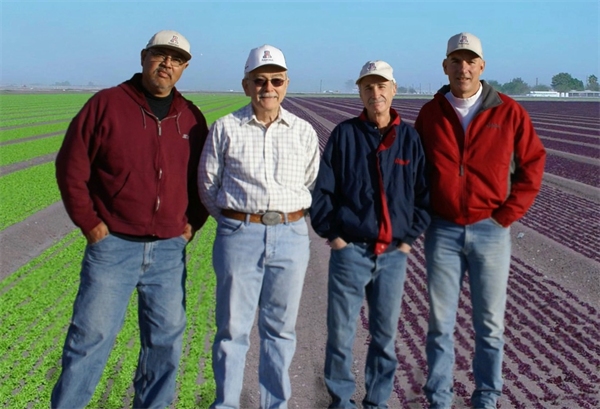Jan 10, 2024
Snowpack in the Colorado River Basin
In 2023 Arizona and the lower basin states were operating under Tier 2 reductions, consistent with the Drought Contingency Plans (DCP) for Colorado River conservation in response to the drought conditions (Figure 1). Tier 2 conditions imposed a 592,000 acre-feet (kaf) reduction in Arizona’s 2.8 million acre-feet (maf) total allocation from the Colorado River. These reductions have primarily impacted the irrigation districts in central Arizona.
For 2024, the Bureaus of Reclamation (BoR) has announced in August 2023 that the river operations will follow Tier 1 DCP reductions (Figure 1). That is due to an increase in the water levels in Lake Mead in the past year with an excellent snowpack last winter and above average runoff in 2023. That increase in water level at Hoover Dam in Lake Mead is primarily a function of an excellent snowpack and higher rainfall in the Colorado River basin in 2023. Significant conservation efforts have been employed as well.

Figure 1. 2024 Tier 1 Shortage for the Colorado River operations. Source:
Arizona Department of Water Resources.
With agriculture responsible for 70% of the diversions on the Colorado River, tracking the snowpack is an important exercise for forecasting and managing the precious water resources in this region and this watershed for sure.
The pressures on the Colorado River system because of the drought that has been impacting the entire basin and region for 23 years have slackened briefly due to the wet winter in 2023 with a good snowpack in the mountains, good rainfall throughout the basin, good flows into the river, and conservation.
The current water level at Lake Mead on Hoover Dam is 1,068.25 ft. above sea level on 3 January 2024. That level is 160.75 ft below full pool of 1,229.00 ft. (Figure 2).

Figure 2. Lake Mead water height (feet above sea level at Hoover Dam) history
and critical Tier conditions. Source: U.S. Bureau of Reclamation.
The current snowpack in the Colorado River Basin is at 74% of average and below levels of this time last year. However, hydrological records indicate that most of the snowpack in this basin accumulates between February and April.
So, it is worth watching the snowpack accumulation and it is always good to pray for more snow in mountains to the north for those of us working and living in this desert with a heavy dependence on this water. However, while monitoring the snowpack gives us a capacity to project, none of that really counts until there is water in the river and in the reservoirs, like money in the bank.
To contact Jeff Silvertooth go to:
silver@ag.arizona.edu
















